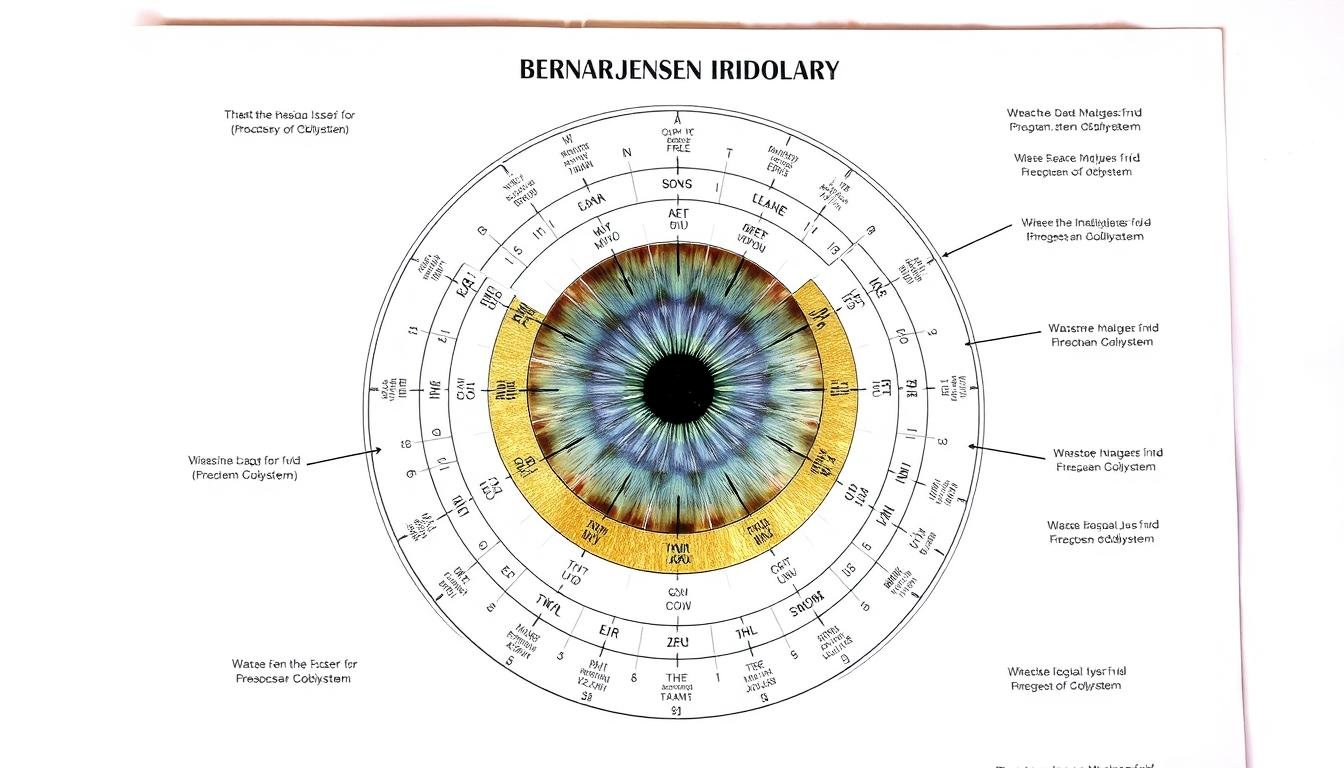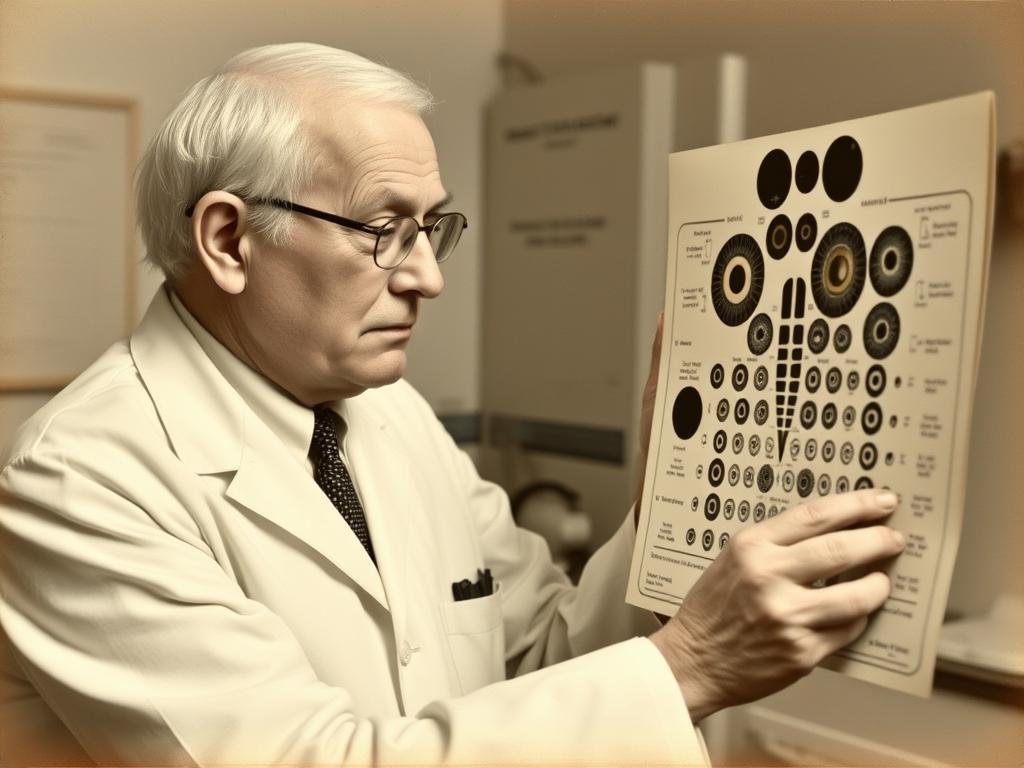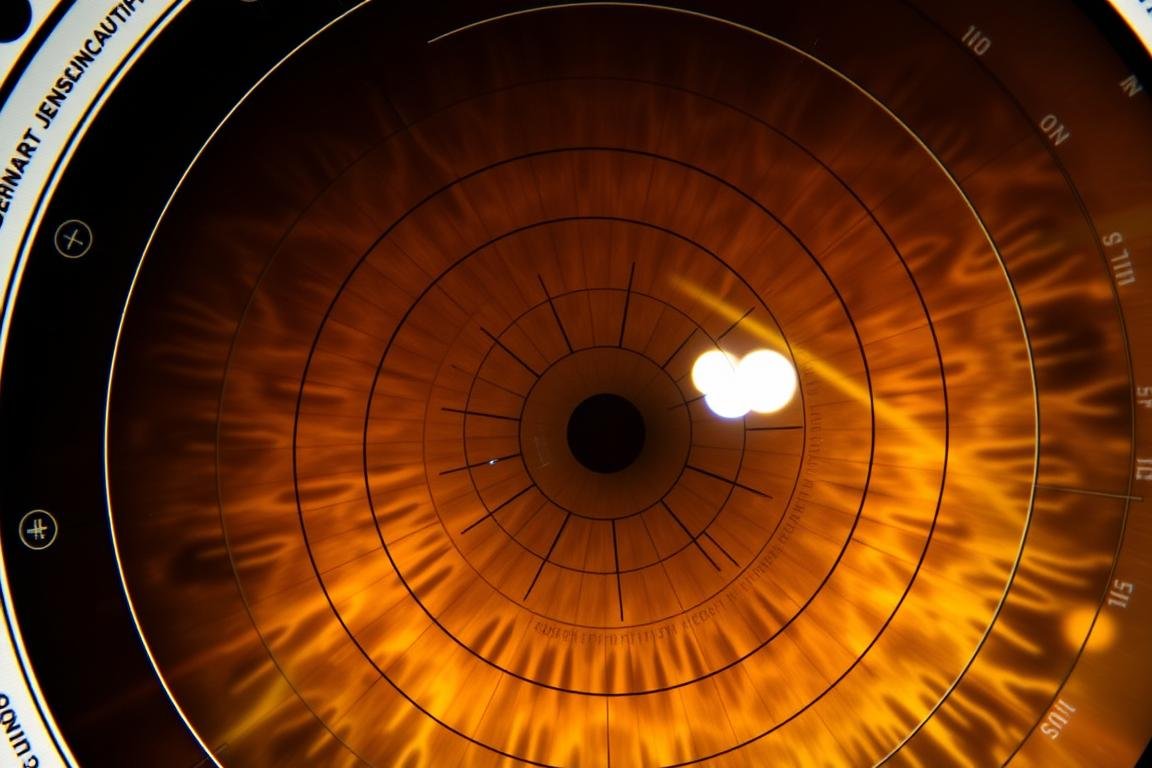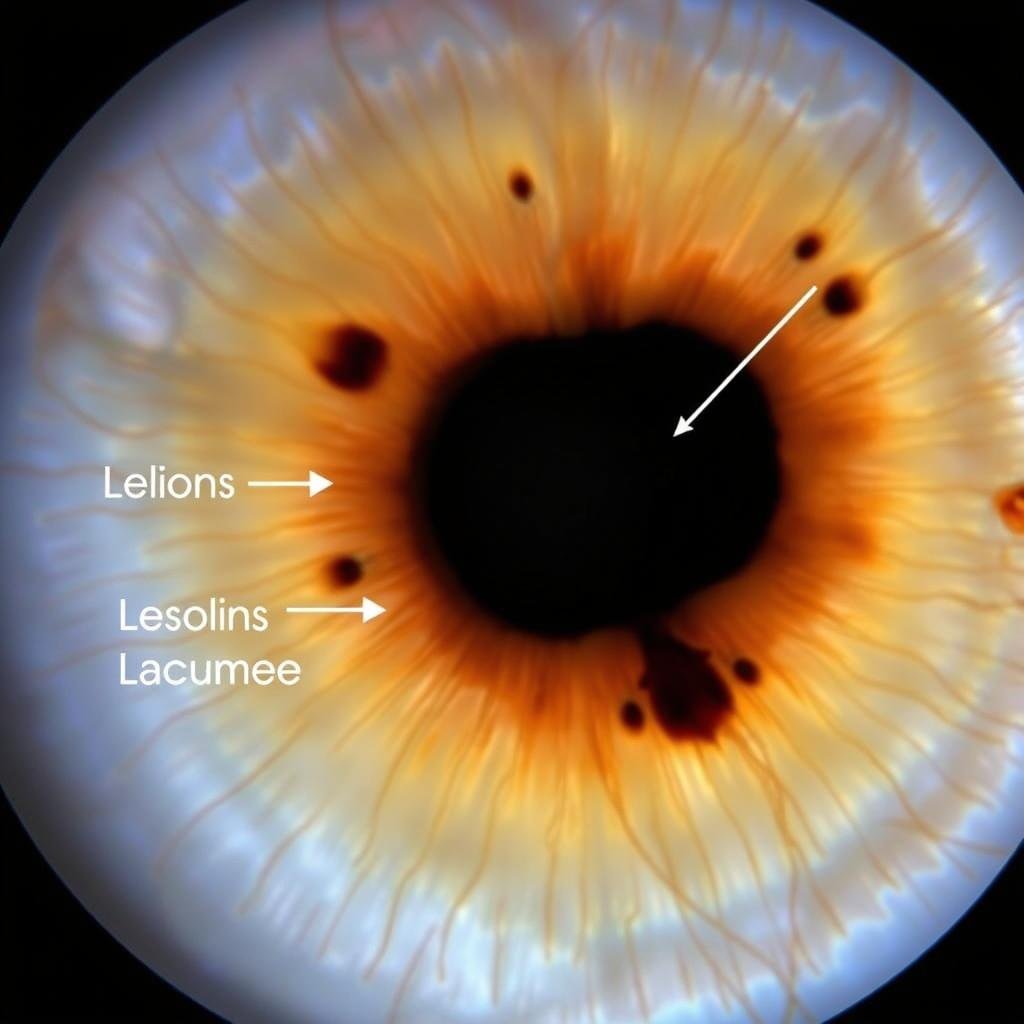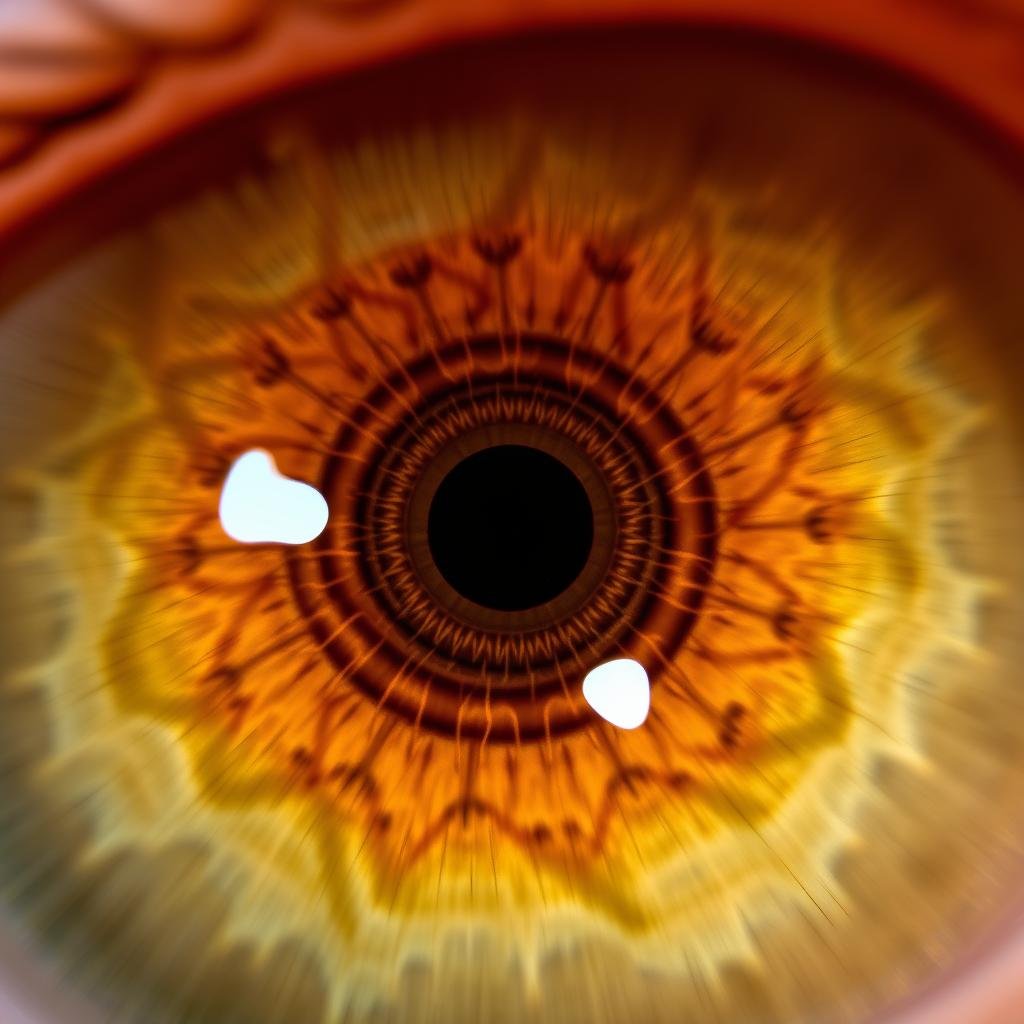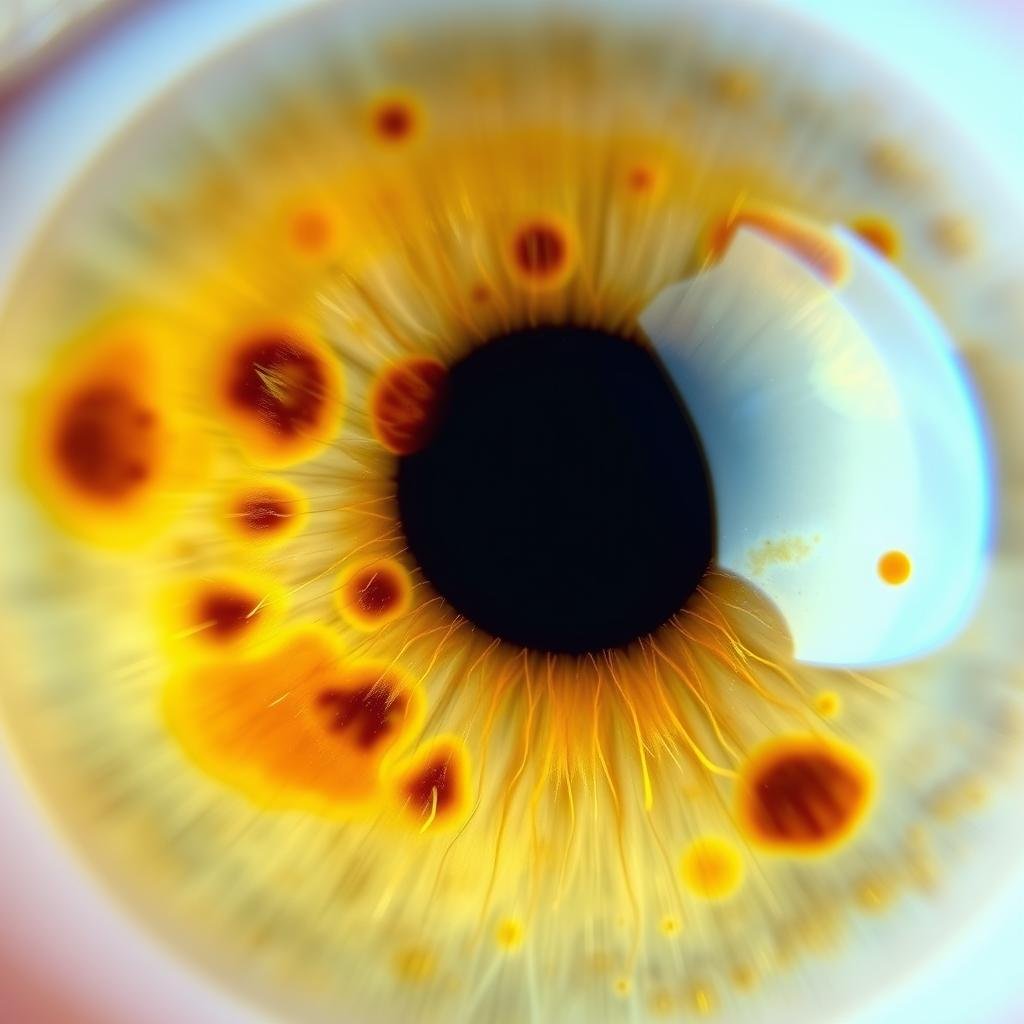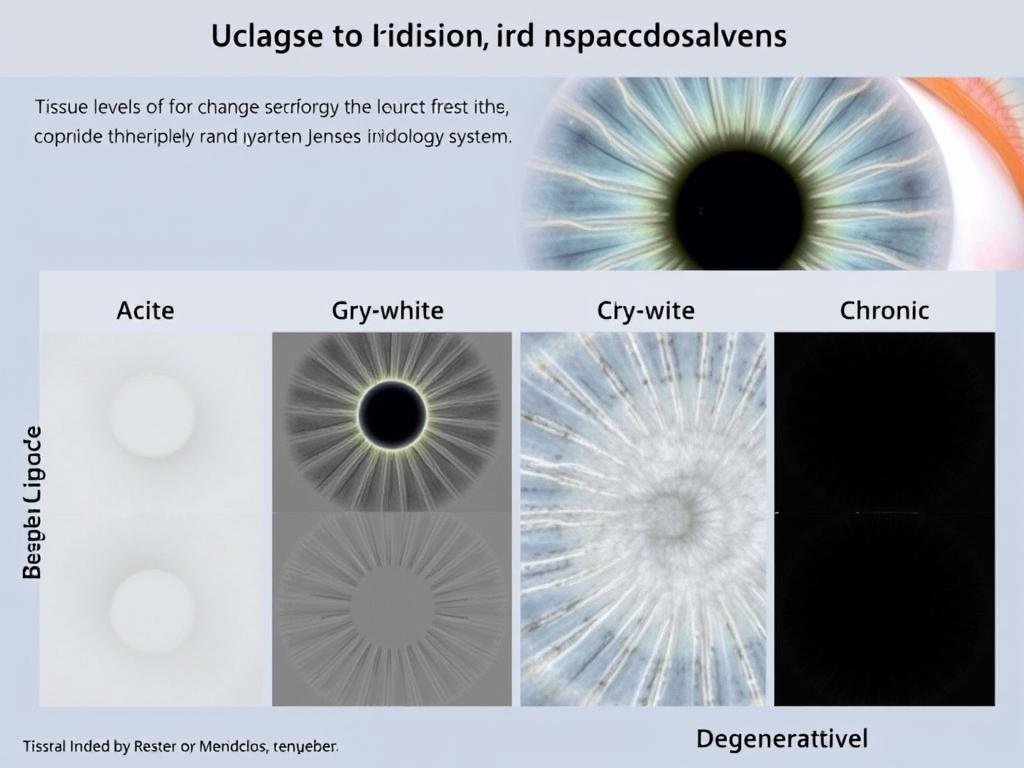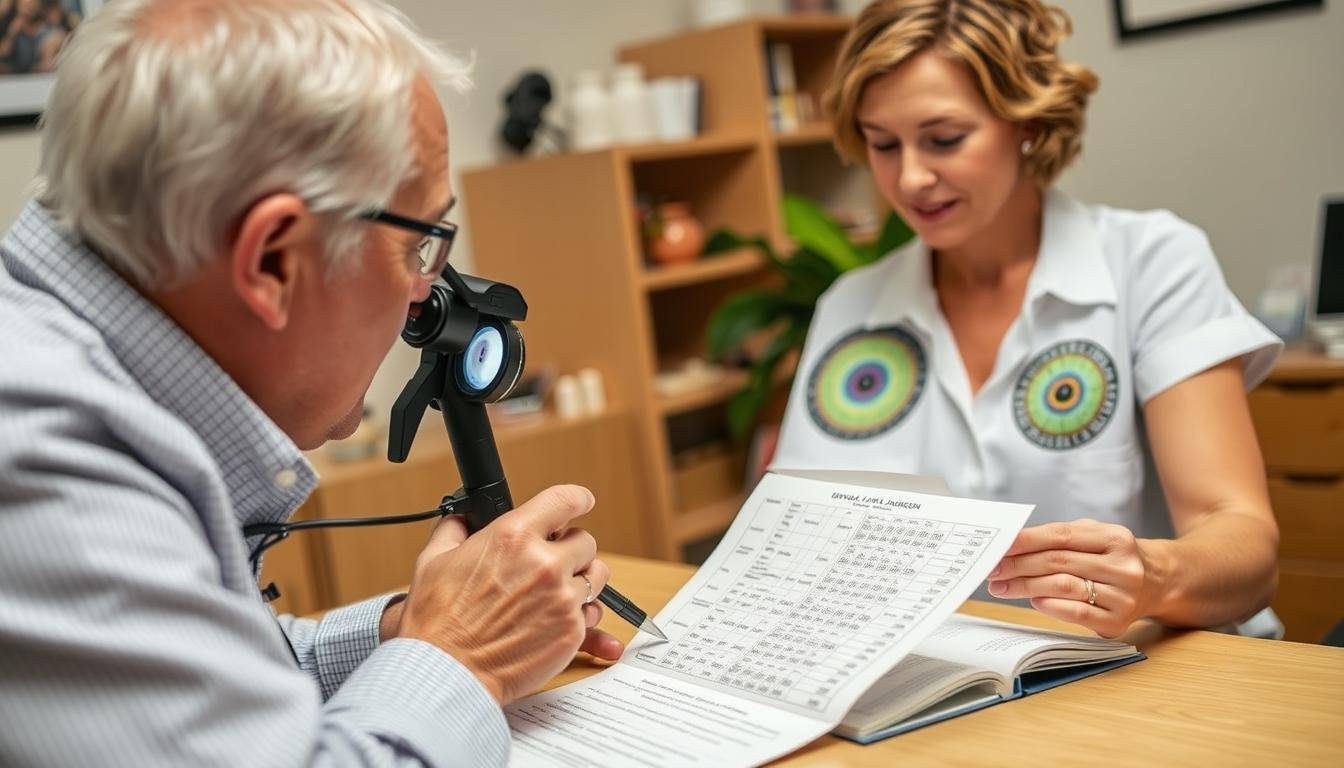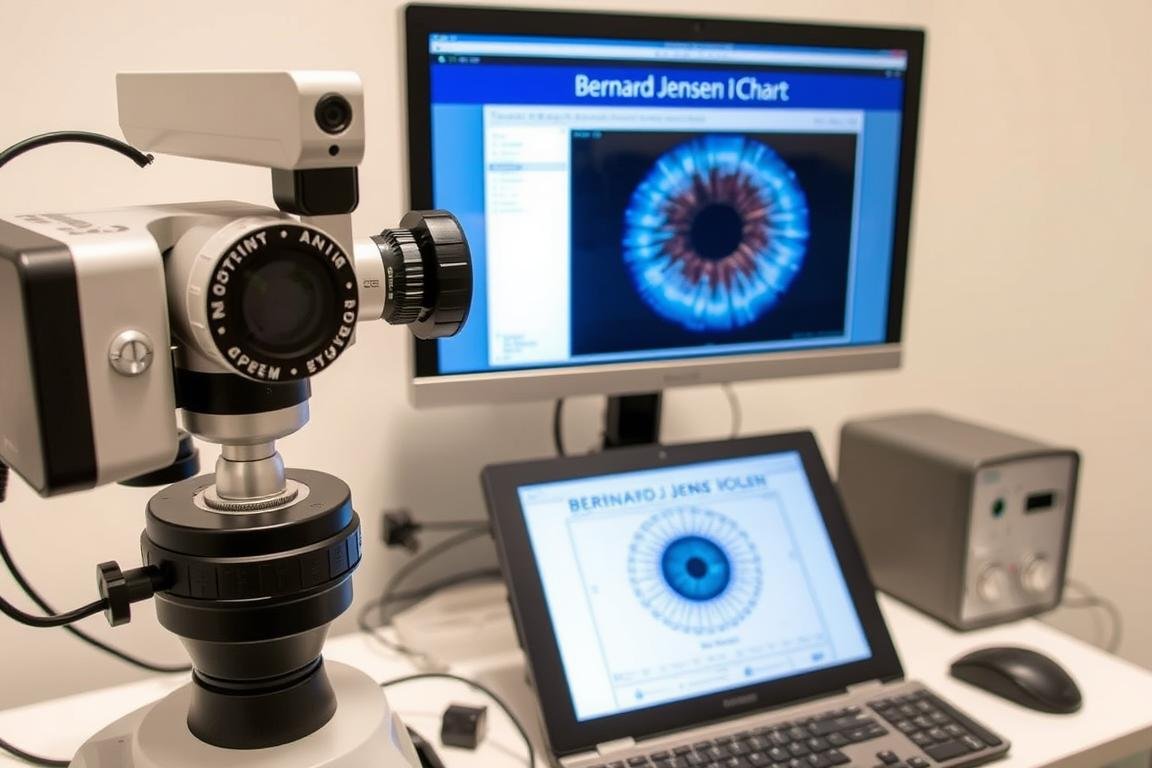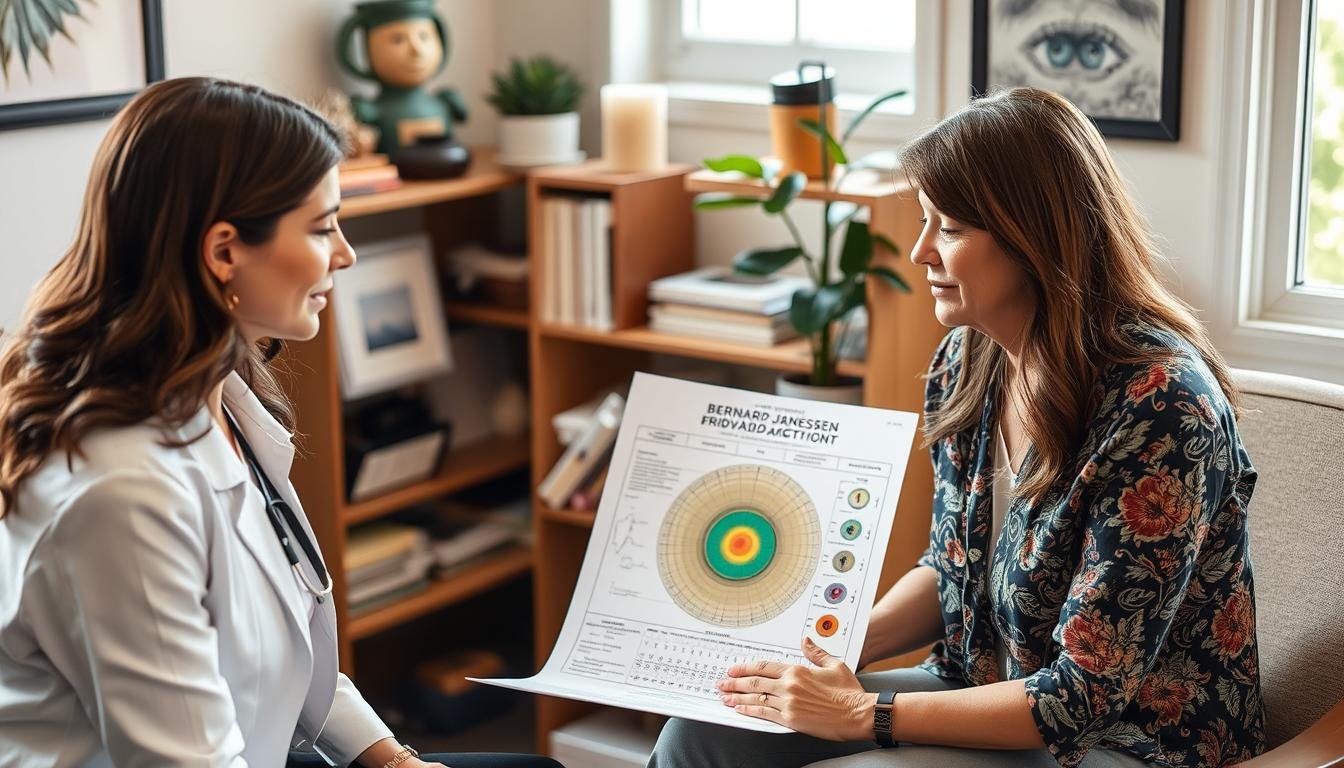Carta de iridología de Bernard Jensen: la iridología, el estudio de los patrones del iris y su correlación con las condiciones de salud, se ha practicado durante siglos. Entre los pioneros en este campo, el Dr. Bernard Jensen destaca por sus importantes aportaciones a la iridología moderna. Sus detallados gráficos del iris se han convertido en herramientas fundamentales para los profesionales de todo el mundo que los utilizan para evaluar las condiciones de salud mediante el examen del iris. Esta guía completa explora el enfoque revolucionario de Jensen hacia la iridología, desglosando la estructura de su carta y explicando cómo interpretar las marcas del iris de acuerdo con su metodología.

El legado del Dr. Bernard Jensen en iridología
Bernard Jensen (1908-2001) fue un quiropráctico estadounidense que dedicó más de 50 años a investigar y desarrollar la iridología como herramienta de diagnóstico. En la década de 1950, Jensen comenzó a enseñar sus métodos en todo Estados Unidos, lo que hizo avanzar significativamente la popularidad y credibilidad del campo dentro de los círculos de la medicina alternativa.
El enfoque de Jensen fue único porque combinó conceptos de iridología tradicionales europeos con sus observaciones clínicas de miles de pacientes. Su trabajo culminó con la creación de gráficos detallados del iris que asignaban áreas específicas del iris a los órganos y sistemas corporales correspondientes.
A diferencia de los médicos anteriores, Jensen enfatizó la importancia de la exposición a toxinas en la evaluación de la salud y abogó por los alimentos naturales como desintoxicantes. Su enfoque holístico conecta el análisis del iris con la nutrición, lo que hace que su metodología sea particularmente atractiva para aquellos interesados en prácticas de salud naturales.

Jensen es autor de numerosos libros sobre iridología, entre ellos “La ciencia y la práctica de la iridología” y “Iridología simplificada,” que siguen siendo textos influyentes en el campo en la actualidad. Su dedicación a documentar los cambios en el tejido del iris y correlacionarlos con las condiciones de salud creó un enfoque sistemático que los profesionales aún siguen.
Estructura y zonas de la carta iridológica de Bernard Jensen
El Carta iridológica de Bernard Jensen divide el iris en aproximadamente 80-90 zonas a través de un sistema de mapeo de 360 grados. Cada zona corresponde a órganos, glándulas o sistemas corporales específicos. Comprender esta estructura es esencial para una interpretación precisa del iris.
El sistema de mapeo de 360 grados
El gráfico de Jensen utiliza un enfoque de reloj para mapear el iris. El gráfico está orientado con la nariz en la posición de las 3 en punto para el ojo derecho y de las 9 en punto para el ojo izquierdo. Esta orientación crea un mapeo reflejado entre los dos ojos.
El gráfico divide el iris en anillos concéntricos que irradian desde la pupila hasta el borde exterior. Estos anillos representan diferentes sistemas corporales, donde las áreas más cercanas a la pupila generalmente corresponden a los órganos digestivos y las cercanas al borde exterior se relacionan con la piel, los vasos linfáticos y las extremidades.

Zonas principales y sus correlaciones
El gráfico de Jensen identifica varias zonas críticas en las que los profesionales se centran durante el análisis:
- El sistema digestivo forma un anillo interior alrededor de la pupila.
- El sistema linfático aparece en la zona media del iris.
- La piel, que representa el límite de eliminación, forma el anillo exterior.
- El sistema nervioso irradia desde el centro como los radios de una rueda.
- Órganos específicos tienen posiciones designadas (por ejemplo, el corazón a las 2 o 3 en punto en el ojo izquierdo)
Carta iridológica de Bernard Jensen: la carta de Jensen es única en su subdivisión detallada de estas zonas principales en regiones más específicas, lo que permite una identificación precisa de posibles problemas de salud.

Gráfico de iridología Ojo derecho -Iridología Tabla -Ojo derecho
ojo derecho reflejes lado derecho cuerpo.
| Posición del reloj (ojo derecho) | Corresponde órgano/sistema | Detalles |
|---|
| 1 en punto - 2 en punto | Cara derecha | Corresponde a los órganos reproductivos izquierdos, incluyen útero, ovarios (hembras) o testículos (hombres). |
| 2 en punto - 3 en punto | Garganta
| Ringflects Health Juntas izquierdas, incluye rodillas, caderas, codos y hombros. |
| 3 en punto - 4 en punto | Espalda superior derecha
| Corresponde a la columna vertebral, la salud espinal, la alineación y la flexibilidad. |
| 4 en punto - 5 en punto | Vejiga | Ringflects Bladder y Sistema urinario del lado derecho. |
| 5 en punto - 6 en punto | Pélvico derecho | Anlingpresents izquierda colon, intestino delgado y salud digestiva. |
| 6 en punto - 7 en punto | Abdomen inferior derecha
| Ringflects izquierdo de riñón, se centra en la filtración, la desintoxicación y el equilibrio de fluidos. |
| 7 en punto - 8 en punto | Abdomen superior derecho
| Ringflects estómago y órganos digestivos en el lado izquierdo. |
| 8 en punto - 9 en punto | Tórax derecho | Corresponde al hígado del lado izquierdo, la desintoxicación responsable y la producción de bilis. |
| 9 en punto - 10 en punto | Pulmón derecho | Los ritmo del corazón del lado izquierdo, afectan la salud y la circulación cardiovascular. |
| 10 en punto - 11 en punto | Cuello derecho | Ringflects Left Lunm, salud respiratoria y función Brea. |
| 11 en punto - 12 en punto | Cerebro derecho
| Corresponde al cerebro del hemisferio izquierdo, la salud mental y las funciones cognitivas. |
| 12 en punto - 1 en punto | Cerebro derecho
| Corresponde al cerebro del hemisferio izquierdo, la salud mental y las funciones cognitivas. |

Gráfico de iridología ojo izquierdo - Gráfico de iridología - Ojo izquierdo
ojo izquierdo reflejes lado izquierdo cuerpo.
| Posición del reloj (ojo izquierdo) | Corresponde órgano/sistema | Detalles |
|---|
| 1 en punto - 2 en punto | Cuello izquierdo
| Corresponde a los órganos reproductivos derecho, incluyen útero, ovarios (hembras) o testículos (macho). |
| 2 en punto - 3 en punto | Pulmón izquierdo | Ringflects Health Right Junks, incluyen rodillas, caderas, codos y hombros. |
| 3 en punto - 4 en punto | Tórax izquierdo | Corresponde a la columna vertebral, la salud espinal, la alineación y la flexibilidad en el lado derecho. |
| 4 en punto - 5 en punto | Abdomen de la parte superior izquierda
| Ringflects Bladder y Sistema urinario del lado izquierdo. |
| 5 en punto - 6 en punto | Abdomen inferior izquierdo
| Anillo de anillo de colon derecho, intestino delgado y salud digestiva. |
| 6 en punto - 7 en punto | Pélvico izquierdo
| Ringflects riñón derecho, se centra en la filtración, la desintoxicación y el equilibrio de fluidos. |
| 7 en punto - 8 en punto | Izquierda hacia atrás
| Ringflects estómago y órganos digestivos en el lado derecho. |
| 8 en punto - 9 en punto | Izquierda de la parte superior de la espalda
| Corresponde al hígado del lado derecho, la desintoxicación responsable y la producción de bilis. |
| 9 en punto - 10 en punto | Garganta izquierda
| Antes de anillo del corazón del lado derecho, afectan la salud y la circulación cardiovascular. |
| 10 en punto - 11 en punto | Cara izquierda | Ringflects pulmón derecho, salud respiratoria y función Brea. |
| 11 en punto - 12 en punto | Cerebro izquierdo | Corresponde al cerebro del hemisferio derecho, la salud mental y las funciones cognitivas. |
| 12 en punto - 1 en punto | Cerebro izquierdo | Corresponde al cerebro del hemisferio derecho, la salud mental y las funciones cognitivas. |
- Ojo derecho: Ringflects Lado derecho cuerpo (por ejemplo, Bien riñón, Bien pulmón, Bien órganos reproductivos, etc.).
- Ojo izquierdo: Ringflects Lado izquierdo cuerpo (por ejemplo, Izquierda riñón, Izquierda pulmón, Izquierda órganos reproductivos, etc.).

Consigue gratis tu guía básica de zonas de Iridología
Descargue nuestra versión simplificada de las zonas de iridología de Bernard Jensen para comenzar a aprender a identificar áreas clave en el iris.
Descargar Guía GRATIS
Interpretación de las marcas del iris según el sistema de Jensen
La metodología de Bernard Jensen para interpretar las marcas del iris se basa en la premisa de que el iris revela afecciones tanto agudas como crónicas a través de signos específicos. Comprender estas marcas es crucial para una evaluación iridológica precisa.
Lesiones y lagunas
Aparecen como puntos oscuros o aberturas en la estructura de las fibras del iris. Según Jensen, indican daño tisular o debilidades inherentes en los órganos correspondientes. La profundidad y oscuridad de las lesiones sugieren la gravedad de la afección.

Anillos y Zonas
Los anillos de contracción aparecen como arcos circulares o círculos completos en el iris. Jensen los interpretó como signos de tensión o estrés en el sistema nervioso. La ubicación de estos anillos indica qué sistemas del cuerpo se ven afectados por esta tensión.

Pigmentación y colores
El sistema de Jensen otorga gran importancia a la coloración del iris. Las áreas amarillas pueden indicar problemas renales o urinarios, mientras que las manchas marrones pueden sugerir afectación del hígado o del bazo. El blanco indica inflamación o actividad aguda en el órgano correspondiente.

Los cuatro niveles de cambio tisular
Jensen identificó cuatro niveles progresivos de cambios tisulares visibles en el iris:
| Nivel | signo de iris | Interpretación |
| Agudo | Fibras blancas, signos de inflamación. | Inflamación activa, condición de lucha del cuerpo. |
| subagudo | Áreas gris-blancas | Inflamación crónica, menos activa. |
| Crónico | Marcas más oscuras, lesiones. | Daño o debilidad tisular a largo plazo |
| Degenerativo | Lesiones negras, lagunas cerradas. | Destrucción de tejidos, insuficiencia orgánica. |

“Las fibras nerviosas en el iris responden a los cambios en los tejidos corporales mediante la manifestación de una fisiología refleja que corresponde a cambios y ubicaciones de tejido específicos.”
– Dr. Bernard Jensen
Aplicaciones prácticas en la práctica de la salud holística
La tabla de iridología de Jensen sirve como una herramienta práctica para que los profesionales de la salud holística evalúen la salud general e identifiquen posibles áreas de preocupación. Si bien no pretende diagnosticar enfermedades específicas, proporciona información sobre las fortalezas y debilidades constitucionales.
Estudio de caso: Evaluación nutricional
Los profesionales suelen utilizar la tabla de Jensen para identificar las necesidades nutricionales. Por ejemplo, las marcas blancas en la zona del páncreas (alrededor de las 7 en punto en el ojo derecho) podrían sugerir una inflamación que podría beneficiarse de alimentos y suplementos antiinflamatorios. Este enfoque se alinea con el énfasis de Jensen en la nutrición como piedra angular de la salud.

Integración con otras prácticas holísticas
Los profesionales holísticos modernos suelen combinar la iridología de Jensen con otros métodos de evaluación:
- Asesoramiento nutricional basado en indicaciones del iris de deficiencias minerales.
- Recomendaciones de hierbas dirigidas a sistemas identificados como débiles en el iris
- Protocolos de desintoxicación para órganos que muestran patrones de estrés.
- Técnicas de manejo del estrés para áreas que muestran tensión nerviosa.
Guía Integral de Interpretación de la Iridología
Amplíe su comprensión con nuestra guía detallada para interpretar las marcas del iris utilizando la metodología de Bernard Jensen.
Obtenga su guía completa
Adaptaciones modernas de la metodología de Jensen
Los iridólogos contemporáneos se han basado en los cimientos de Jensen, incorporando avances tecnológicos y nuevas investigaciones:
Iridología digital
Los profesionales modernos suelen utilizar cámaras digitales de alta resolución y software especializado para capturar y analizar imágenes del iris. Esta tecnología permite una documentación y comparación más precisa a lo largo del tiempo, mejorando la aplicación práctica del sistema de gráficos de Jensen.
Evaluación integrada
Los profesionales holísticos de hoy suelen utilizar la iridología como un componente de una evaluación de salud más amplia, en lugar de como una herramienta de diagnóstico independiente. Este enfoque integrado se alinea con la filosofía holística de Jensen al tiempo que reconoce las limitaciones de cualquier método de evaluación único.

Perspectivas científicas y análisis crítico
Si bien el cuadro de iridología de Bernard Jensen sigue siendo popular en los círculos de la medicina alternativa, es importante abordar la perspectiva de la comunidad científica sobre esta práctica. Comprender tanto la evidencia de apoyo como las críticas proporciona una visión equilibrada.
Argumentos de apoyo
- El iris contiene miles de terminaciones nerviosas conectadas al cerebro
- Éxito anecdótico informado por muchos profesionales
- Método de evaluación no invasivo
- Potencial sistema de alerta temprana para condiciones en desarrollo
- Fomenta enfoques de salud preventiva.
Críticas científicas
- Falta de estudios controlados que respalden la precisión diagnóstica.
- La estructura del iris permanece en gran medida estable durante toda la vida.
- Ensayos ciegos fallidos (p. ej., estudio de 1979 con el propio Jensen)
- No hay ningún mecanismo fisiológico establecido para la conexión órgano-iris
- Riesgo de retraso en el diagnóstico médico adecuado
En un notable estudio de 1979, el propio Bernard Jensen y otros dos iridólogos examinaron fotografías de 143 pacientes.’ iris para identificar enfermedades renales. Los médicos no pudieron distinguir con precisión entre pacientes con enfermedad renal y aquellos con función renal normal, lo que generó importantes dudas sobre la confiabilidad diagnóstica del método.

Nota importante: Si bien la iridología puede ser una interesante herramienta de evaluación complementaria, no debe sustituir el diagnóstico médico convencional. Siempre consulte a proveedores de atención médica calificados si tiene inquietudes médicas.
Conclusión: el papel de la tabla iridológica de Jensen en la medicina complementaria
La tabla iridológica de Bernard Jensen representa una contribución significativa al campo de la evaluación holística de la salud. Si bien la validación científica sigue siendo limitada, muchos profesionales y entusiastas encuentran valor en su enfoque sistemático para comprender posibles patrones de salud a través de la observación del iris.
El enfoque más equilibrado considera la iridología de Jensen como una herramienta complementaria y no como un sustituto del diagnóstico. Cuando se utiliza junto con la evaluación médica convencional y otras prácticas holísticas, puede contribuir a una comprensión más completa de los patrones de salud individuales y las tendencias constitucionales.
Si usted es un profesional de la salud holística que busca ampliar sus herramientas de evaluación o simplemente siente curiosidad por enfoques alternativos para la salud, comprender la metodología de Jensen proporciona información valiosa sobre uno de los sistemas más influyentes de la iridología moderna.

Explore nuestra colección completa de recursos de iridología
Acceda a nuestra biblioteca completa de recursos de iridología, incluidos gráficos imprimibles, guías de interpretación y materiales educativos basados en la metodología de Bernard Jensen.
Acceder a recursos


